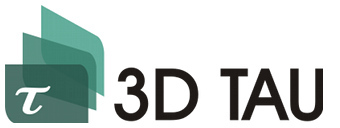- No special glasses, helmets or head tracking is needed. There is no need to perform dynamic adaptation for any particular viewer.
- Multi-view. A scene can be visible from multiple angles depending on viewers position to the screen. Different users will see different views when looking from different positions. The amounts of perspectives can vary from several to tens. The 3D image perception (stereopsis) effect is achieved when left and right eyes see different perspectives.
- Unlimited viewer count. Multiple users can look at the screen and all of them will see the view from their perspective, as there is no user tracking.
- Thin layer and lightweight construction. Only several additional layers are needed to be applied on top of popular LCD panels.
- Minor power consumption. The system requires only small amount of electricity or computational power for its operation. The only primary power consumption is by LCD shutter.
- No image resolution loss. Each lens of the lenticular covers constantly dedicated screen area. This allows precise focusing the view and keeping the same image resolution as it is allowed by primary image display.
The Stereo-Step-Eclipse technology meets a list of requirements, which ensure its competitive advantages.
